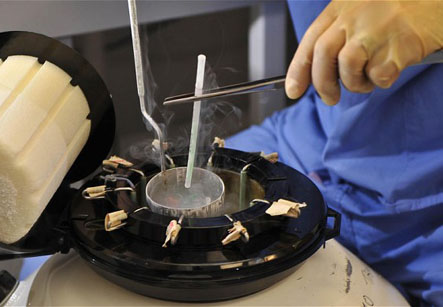Frozen Embryo Transfer FET
Introduction
In some artificially assisted reproductive technologies, there is a provision of freezing and storing the embryos that can be used if initial attempts fail. This process of freezing is called cryopreservation. These provide a second or third chance of pregnancy without the hassle of undergoing the whole procedure of hormonal injections.
These injections were needed the first time to stimulate the ovary to produce more eggs. The hormonal and medicinal injections are usually painful, expensive and tedious. This is the advantage of Frozen Embryo transfer or FET.
procedure
The embryos that have been created at the initial attempt of in vitro fertilization can be preserved at three stages. The first stage is when the embryos are 16 hours in age before they have divided further into more number of cells. The second phase at which cryopreservation can be attempted is when the embryo has divided into two to four cells. The third time when they can be frozen is at five days age when they are called blastocysts. This phase is risky in terms of survival of the embryo. The second phase is the commonly preferred phase these days.
The embryo is inserted into the uterus using a thin, flexible tube called a catheter. Iran ranks first in the region in terms of infertility treatment studies

The transfer of embryos can take place only after suitably preparing the womb lining to receive and implant the embryo. Once attached to the uterine wall the embryo can grow into a baby. The suitability of the womb lining may be natural – i.e. the implantation is made when the womb is naturally ready for implantation in each monthly cycle. The other option is to prepare the lining using hormonal and medicinal means. To know the readiness of the womb lining usually ultrasound or urine tests are used.
Once the lining is ready the number of embryos that need to be thawed or inserted could be decided. Usually one or two embryos are implanted. Inserting more than one embryo may risk twins or multiple births.
The insertion of the embryo into the uterus is a short process. The embryo is inserted into the uterus using a thin, flexible tube called a catheter. The patient is kept in the hospital bed for four to six hours before she is allowed to go home.
Recuperation and post procedural complications
Once the transfer into the womb is done the patient will be asked to come back in two weeks for a urine test to confirm presence of pregnancy. The rates of success with Frozen Embryo Transfer FET is about half that with IVF in vitro fertilization using fresh embryos. The success rates depend on the age of the woman, other physiological factors. Some factors that reduce the chance of success include smoking, alcohol consumption, deficiency of vital nutrients like folic acid in diet etc. Commonest risk with FET is multiple births and associated complications. The procedure itself may cause some amount of cramping in the patient.